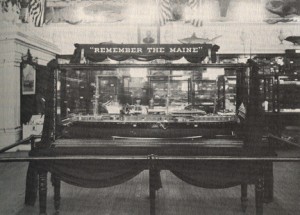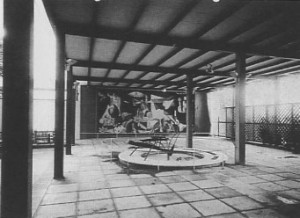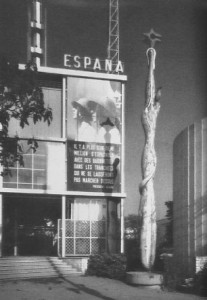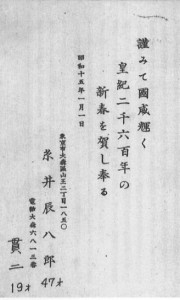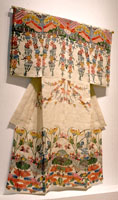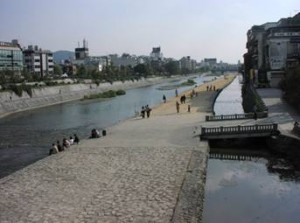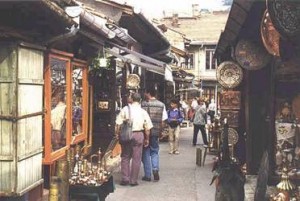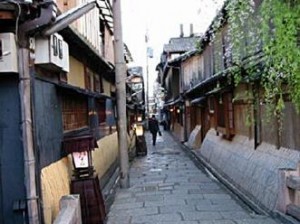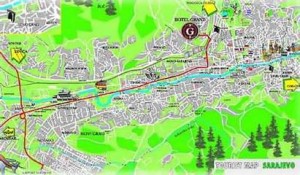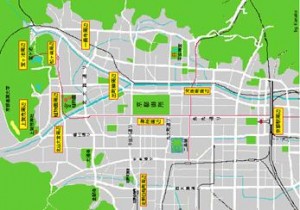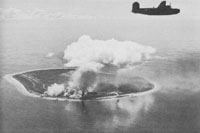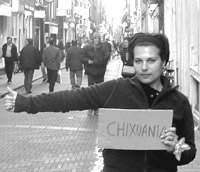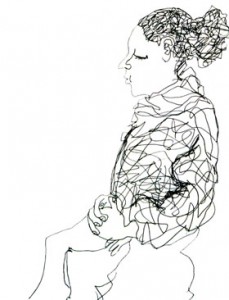My aim is to create an art exhibition which is free from the structure of
the Nation-State, the principle of the Expo (World’s Fair)
Expo and the Nation-State: The meaning of the participation of the United States
Maurice Roche, author and researcher of Creole culture, pointed out that the Expo, which started in the 19th century, was the product of the European shift from city-states to nation-states, and also to the market economy. [1] In the process of the creation of the nation-states, represented in the unification of Germany in 1870, Expo functioned to create the idea of national culture, in the field of Anderson’s “Imagined Community” and Habarmas’ “Offentlichkeit (public sphere).” Roche also pointed out that Expo offered elites a form of popular cultural policy-making, which could be used to promote among the mass of ordinary people an acceptance of, incorporation in, and positive attraction and loyalty to the new political economic formations being constructed around them. Finally, Expos were a powerful method of promoting versions of citizenship, social membership, and cultural inclusion, notably those we have characterized as tourist consumerism and urban cosmopolitanism. [2]
It is noteworthy that especially in the United States, Expo was historically a strategic tool. The United States of America, a new country, needed a powerful nationalism as a centripetal force. Robert W. Rydell, a historian of Expo, writes that the US had often used Expo for comparative purposes. Americans measured their achievements against those of other nations, but at the Expo, the idea of technological and national progress became laced with scientific racism. [3] Rydell continues that Expo offered American intellectual, political, and business leaders a way to establish consensus about their priorities and their vision of progress as racial dominance and economic growth. [4]
In the Trans-Mississippi and International Exposition in Omaha in 1898, the Native American band played the “Star Spangled Banner,” and exhibited the model of the Battleship Maine with the sign ”Remember The Maine.” [5] During the next Expo “Pan-American Exhibition”, held in Buffalo, the US exhibited the newly colonized Philippine without hesitation. Soon thereafter, President William McKinley, who organized these two Expos, was killed by the shot of an anarchist after his speech about Expo, in which he had said “expositions are the timekeepers of progress.” [6]
In the Louisiana Purchase Exposition at Saint Louis in 1904, groups of pygmies and “Patagonian giants” from Africa, the Ainu from Japan, and prominent Native American chiefs including Geronimo were formed into living ethnological exhibit as a supplement of the US government exhibition of nearly one thousand Filipino. [7] In 1929, the planners of the Expo approved a proposal from the Ku Klux Klan to organize a meeting and burn a huge cross at the event. The plan was withdrawn following an outburst of protest from African-Americans. [8]
The participation of the United States in the Aichi Expo 2005 at the last minute was a symbolic episode, which further exposed the structure of the nation-state. Just after the reelection of Prime Minister Junichiro Koizumi and his decision to send the Japanese Self Defense Force to Iraq on November 11, 2003, the United States declared it would join the Expo. Since the end of the Cold War, the United States did not use the Expo to show American lifestyles as propaganda. A law passed in 1988 prohibited the spending of government money on the Expo, as defined by the International Exposition Treaty. Therefore, in spite of the frequent requests of the German government to join the Hannover Expo, the US declined. However, George W. Bush wanted Japan to join the War on Terror. Now, when US unilateralism is in a deadlock, his decision to join the Aichi Expo 2005 stands as a symbol of cheap and positive international cooperation.
Remember the Maine, Remember Pearl Harbor, Remember September 11 – this happens every 50 years, like the Kondratev Cycle, and the US starts war again to expand its power and territory. The Iraq War, which started from Remember September 11, will come back to the country of Pearl Harbor attack, and will spread the tourist consumerism and spectacles under the tower called “Tower of Land” which is designed by Fumiya Fujii, the Japanese pop star.
The Corruption of Internationalism and the Limitation of the Nation-State
When Pablo Picasso exhibited Guernica at the Paris Expo in 1937, the exhibition space was in the Spanish Pavilion, on the side of the Front Populaire (Popular Front). On the façade of this Spanish Pavilion, there were faces of soldiers and the message from Manuel Azaña. Also in the same Paris Expo, was the Nazi Germany Pavilion, designed by Albert Speer, with the hawk on its top, and the Soviet Pavilion with the monument of workers facing each other in front of the Eiffel Tower. [9]
The United Nations Pavillion in the Aichi Expo 2005 will exhibit the image of the replica of Guernica, which hangs at the Security Council. [10] This replica of Guernica at the UN had been covered by a blue sheet just before the speech of Colin Powell in front of the Security Council before the Iraq war. [11] At that time, I was struggling at an anti-war march and had blocked 1st avenue in front of the UN with other students from Columbia and NYU, so when I listened this news, I was dejected.
In the “Another Expo” I propose, there are two artist from former Yugoslavia – since the bombing of Yugoslavia by NATO means the end of Internationalism. In Yugoslavia, in spite of the Security Council’s order to stop bombing, NATO (which is led by the United States) started aerical bombing, which is quick and assymmetric, under the name of humanitarian intervention. Japan practically supported this bombing. At that moment, the internationalism which is supposedly the guiding light of the United Nations was corrupted, and it created American Unilateralism, the base for the United States to later start the Iraq War. Furthermore, the Japanese government supported the United State’s Iraq War, which ignored the UN.
The Japanese Foreign Policy’s long term aim was to join the Security Council, but this principle was corrupted. Also, the US Deputy Secretary of State Richard Armitage required Japan to amend the Japanese Constitution No.9, the peace declaration which defines that Japan cannot have military power and does not have the right to fight against other countries [12] . In other words, Japan became the client of the United States.
Internationalism was corrupted within the paralyzed UN, and a New Regionalism saw the light of day, for example in Spain against the Aznar regime as anti-American feelings spread in Europe. However, this problem is not well discussed in Japan.
While the greatest institution of Internationalism was corrupted by the hand of the United States and Japan, if you use the idea of nation-state such as Aichi Expo to talk about the world, it cannot go further from the problem of colonialism. What we should think about is not the interest of developed countries. We need to deconstruct the idea of outside and inside of the nation – in other words, to deconstruct the idea of national profit, and to think about the problem of post-colonialism and global capitalism which emerged at the end of the 20th century on a global scale.
The Significance of Expo in Japan and Our Art Exhibition “Another Expo – Beyond the Nation-State”
In Showa 15 (1940,) Japan planned to have the Great East Asia Co-Prosperity Sphere Expo, which aimed at “The Fusion of Eastern and Western Culture” in a war situation. The leader of the Expo was Chichibunomiya, the brother of Emperor Hirohito, and the admission ticket had a sentence that stated “Emperor Age 2600.” The original location of the expo was cancelled because of the construction of the Meiji Shrine, which coincided with the death of Meiji Emperor. The Expo space was changed to Tukishima, Tokyo. However, this Expo was cancelled, so the ticket holders of this Expo could use them to enter the Osaka Expo in 1970. [13]
At the Osaka Expo, there was a huge movement of Anti-Expo Art. The artist Dadakan, the naked Dadaist who spurred the “Tower of the Sun” designed by Taro Okamoto, located at the center of Osaka Expo, was in attendance. On the day of the New Year in 1996, Dadakan sent a New Year’s letter to Kentaro Takekuma, the researcher of the Expo, which was the old New Year’s letter in the year 1940. It simply said: “We celebrate the New year of Emperor Age 2600.” [14] Dada emerged in Switzerland during the First World War, but it connected to the history of Dadaism in Japan.
The Japanese organizer of the Aichi Expo declared that the countries which will join the 2005 Expo that don’t have more than $2,975 per capita GNP will be supported by the organizer. [15] An “Another Expo” artist Marina Abramovic’s country is Serbia Montenegro, and its per capita GDP is $1,020, which is one ninth of Slovenia, which will join Aichi Expo, and one of the former Yugoslavian countries. Although the offer of support was extended to it, Serbia Montenegro did not join this Expo, since there is an effect of war and the recovery from that.
The theme of the Aichi Expo (the Chinese character means Love-Earth Expo) is “The Wisdom of Nature”. However, in spite of this theme, the Expo ignores the whole problem of war and environmental problems. Therefore, I organized the exhibition “Another Expo – Beyond the Nation-State” and I gathered the artists who are questioning the structure of the nation-state, which is the base of the Expo, artists who have suffered from the structure of the nation-state, and artists who questions the problem of the nation-state.
This “Another Expo” will be included in the gallery exhibition and the guerilla exhibition inside of the Expo site.
Yuken Teruya
For Okinawa, which was returned to Japan in 1972, the Aichi Expo is the first Expo it can join as a Japanese territory. Born in Okinawa in 1973 and a resident of New York, Yuken Teruya approaches each project with a keen sense of the environments he inhabits.
A work titled “You-I, You-I” (Tying Together) is a kimono which got a prize in the 2002 Vision of Contemporary Art (VOCA) in Tokyo. In this hybrid work, Teruya used the traditional Japanese craft of bingata, the Okinawa technique of stenciling on cloth to create a kimono. Upon closer inspection of the images, parachutes and US fighter planes were juxtaposed with chrysanthemum, dugong and flowing water, fusing tradition with contemporary political tensions in Okinawa. In Okinawa, to see and hear the noise of US Air Force Plane is an ordinary thing of everyday life. Around dugongs, there are helicopters, which suggest that the new heliport of the US Air Force threatens the habitat of dugong in Okinawa.
From Former Yugoslavia – Sejla Kameric
“Another Expo” include the two female artists from the former Yugoslavia. One is the Bosnian Muslim artist Sejla Kameric from Sarajevo, and one is a Serbian artist, Marina Abramovic from Belgrade.
There is no other area like the former Yugoslavia, which faced the difficulty of the structure of the Nation-State in the 1990s. The war was so complicated, and there are many arguments between intellectuals whether or not the Bosnian War is a civil war. To think about Yugoslavia gives us a clue in thinking about the future of the post Nation-State world.
After experiencing the Serbian siege in Sarajevo, Sejla Kameric made artwork which about the tragedy of Srebrenica. Kameric lost her father in the war. Lots of artists who faced the difficulty of war became nationalistic, or even quit art making, such as Adorno suggests. However, while lots of male artists faced the difficulty of art making, Kameric sublimated the traumatic experience into beautiful art forms, such as “Bosnian Girl” using herself as a motif.
In the spring of 1993, the UN established six “safe areas” for Muslims, these are the towns where UNPROFOR troops would protect them from attack. These areas were Sarajevo, Bihać, Tuzla, Goražde, Srebrenica, and Zepa. In May 1995, renewed Serb bombardments of Sarajevo were answered by a NATO air strike on Serb forces. The Serbs responded by holding more than 350 UNPROFOR soldiers hostage, and they were released only after protracted negotiations. In July, Serb forces overran Srebrenica and Zepa. In Srebrenica, they massacred around seven thousand Muslim men and boys, captured in the presence of a 450 Dutch UNPROFOR contingent that had requested NATO air support but never received it. The United States and NATO reacted to these events with more forceful efforts to end the conflict.
This “Bosnian Girl” is a public art project. The image of Bosnian Girl will be distributed on Newspapers, Magazines and as postcards. To exhibit this work in Japan, the completely neutral area which is far from Europe, has significance.
Miljacka River, the outbreak point of WWI, and Kamogawa River in Kyoto
Turkish Neighborhood in Sarajevo and Gion Area in Kyoto
Hollow Shape of Sarajevo and Kyoto; Sarajevo Was Surrounded by Serb Military by Using this Hollow Shape
For this “Another Expo,” Sejla Kameric lives in Kyoto and created special art works for this art exhibition. Sarajevo and Kyoto is one of the most important historical cities in the world, and the geographical location such as small river is located at the center of the city, and the shape as hollow is pretty similar.
Jun Shibata – Nauru Republic Pavilion
Coming back to Japan after a six year stay in Berlin, Jun Shibata created something invisible, of ghost-like consistently. For “Another Expo,” he will create the Nauru Republic Pavilion, which was in danger of extinction by the operation of the United States.
Nauru is a small coral island with 12,000 population, which is 58 percent Nauruans. In the mid-1980s, phosphate was exported, and it raised the annual income of Nauruans close to $50,000, making Nauru one of the richest, per capita, countries in the world. Most of the labor for this mining was done by foreign laborers, so most Nauruans worked as government officials, or were unemployed. However, in the 1990s, almost all phosphate was mined, and Nauruans started to find a new industry.
The new industry was finance. However, the people in Nauru were amateurs in finance and their business was nothing but risky. In the end, Nauru was used by the Russian mafia and terrorists for money laundering, and it caused the bankruptcy of the Nauru Republic. Moreover, the passport of Nauru was sold for money – most terrorists arrested in the United States were Nauru passport holders. Furthermore, Australia started to pay Nauru for the acceptance of the refugees from Afghanistan, and it caused the small island of Nauru to become full of refugees.
After the September 11th attacks, the United States tried to stop the flow of terrorist capital. The FBI started to destroy the phone lines of Nauru in the beginning of 2003. They also seized and destroyed all forms of transportation such as ships and airplanes. Because of it, Nauru Republic became completely cut off from the outside world for several months since January 8, 2003. [16] This operation was the top secret, and mainstream media did not report the critical situation of the Nauru Republic. At that time, the Australian telephone company visited Nauru to fix the telephone lines, but they lost their communication even though they had a satellite phone. The President of Nauru went into exile to the United States for the treatment of heart disease, but he died in February, 2003.
Since the Chief of the Nation disappeared, there is a severe survival condition in Nauru. Since Nauru imported almost all its food, there a shortage now. Information coming from Nauru is still limited, but the palace was reported to be on fire, and refugees from Afghanistan were said to create riots. That is to say, war there was started before the Iraq War.
The Nauru Republic Pavilion exhibits the products which are connected to with Nauru Republic, such as food, peculiarities, local currencies. Also, there is a photo exhibition which includes the photos under the English and German colonization, and the occupation of the Japanese Military, American aerial bombing during the World War II, and the disposal of the unexploded bomb by Native Nauruans.
The Nauru Republic Pavilion will be held at the backseat of an altered van. By using this van, Shibata will do a guerilla exhibition in the parking lot of the Aichi Expo or the local parking lot around the Aichi Expo site.
Ines Pais – Chixuania Project
Ines Pais from Lisbon is a symbol of the unification of Europe, since she got an education in France and Germany, and works in Berlin and Lisbon. Her most well known project is called “Chixuania,” the project to create the imagined state, that is to say, that the imaging itself is a part of the all of existence.
In the process of traveling and meeting others, Pais felt pushed to the limits of abilities and expanded her horizons, both culturally and socially. While she was traveling, the people whom she met tended to forget her name, but they remembered the name of her nationality. She realized that nationality is still used as a way to reinforce some kinds of communal illusion. Pais asks why inquiring for someone’s country’s name is so popular. When someone is asked one’s country name, doesn’t that person have the possibility to resist the need to categorize? Can’t one affirm one’s autonomy from his or her nationality?
Ines Pais says, “Chixuania is a fictive nation created by The IP Foundation. It symbolizes everyone’s uniqueness and to a certain extent everyone’s privacy. Chixuania has no form. It is a free place. It is neutral and should continue as neutral. It is located in every country and the language spoken is your native language. It belongs to everyone who knows about its existence. Everyone can relate to Chixuania through individual experiences, preferences, fears and through their own personal visions. Chixuania is also a means of psychological, ethnographic research about how someone is free to inhabit an independent identity, yet linked by the histories, habits, attitudes of a family, of a clan, of a culture.”
Ryoga Katsuma – Give Me Food Project
Ryoga Katuma has a unique career as an artist. His career started on the streets of Osaka. He had run away from home on Katashima Island, Kochi, when he was a teenager, and started to live on the street of Osaka as a homeless person. He had no money to buy food, but tried to think hard how to get money and survive. As a result, he bought a pen and notebook, and started to draw the portraits of passersby. First, his drawings were awful, but people liked Katsuma’s funny character, and started to buy his drawings and gave him food. He started to enjoy drawing, and started to think about becoming a professional painter. This is the anecdote why Katsuma started his career as a professional painter.
In this project, Katsuma lives in the gallery, and draws the portrait of the visitors. If visitors like Katsuma’s drawing of themselves, the visitors should give him food as an exchange. Sometimes, if Katsuma needs shampoo, the artist will ask you to give him shampoo in exchange for his drawing. While literally in the exhibition, Katsuma cannot spend any personal money to get some items at the stores. In this project, Katsuma will survive only by his technique of drawing and begging. While artwork which deals with the problem of homeless people and global capital is boring, the paintings of Ryoga Katsuma who experienced homeless person and also worked at the Toyota factory’s assembly line have a special strength inside.
Author: Shinya Watanabe
Watanabe is the curator of Spiky Art. He has traveled around the world by himself. Having graduated with a Masters of Visual Art Administration from New York University, he is in the process of fundraising for this project. He needs your help as a sponsor!
[1] Roche, Maurice “Mega-Events Modernity: Olympics and Expos in the Growth of Global Culture” Routledge, London, 2000. P27
[2] Roche, Maurice P71
[3] Rydell, W Robert. “All the World’s a Fair: Visions of Empire at American International Expositions, 1876-1916” University of Chicago Press, 1984 P5
[4] Rydell. W Robert P8
[5] Rydell. W Robert P108-114
[6] Roche, Maurice P46
[7] Rydell. W Robert P163
[8] Roche, Maurice P86
[9] Mattie Erik “World’s Fairs” Princeton Architectural Press, New York 1998. P184
[10] “Aichi Banpaku no Kokuren Pavilion “Guernica” Eizouka mo”(The UN Pavilion at Aichi Expo will have an image of Guernica)Yomiuri Newspaper, July 22, 2004
[11] “U.N. Security Council Anti-War Mural Hidden – covered-up for Powell speech” by T. Reason Thursday February 06, 2003 SF Indymedia.org
[12] “<Armitage Hatugen> Kokurenn Senryaku ni Shougeki Kaiken Oshitukeni Hanpatumo (Armitage’s Word: The shock to the UN Strategy, The Opposition toward Amendment is possible”Takahiro Hirata, Yuudai Nakazawa; Mainichi Newspaper July 22, 2004
[13] Kushima, Tsutomu “Maboroshi Bankoku Hakurankai” (The Phantom of the Expo) Shigakukan Press, Tokyo.1998 P33
[14] Takekuma, Kentaro ”Berabou na Hitobito – Sengo Subculture Ijinden” (The Absurd People- The Giants of subcultures in the Post War Period) Ohta Press, Tokyo. 1998. P321
[15] “Aichi expo organizer to support nations from 3rd world” NAGOYA, July 24 Japan Economic Newswire
[16] “Nauru loses contact with the world” BBC News February 21,2003







